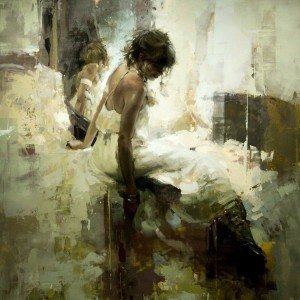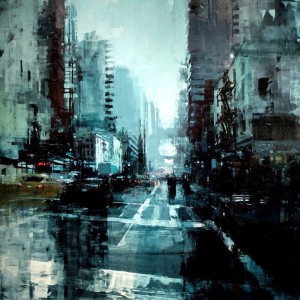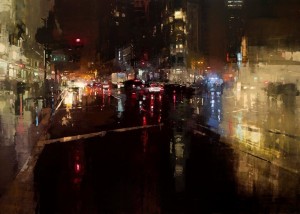Brittany Fucik: Artist’s Statement
I hold a firm belief that visual work can say and express what words do not. In my work, I try to express feelings and ideas that I believe are not adequately described in words. This is usually a specific feeling or the emotions generated by experiencing a series of events. Growing up, I was always someone people came to in order to discuss their problems and feelings because they felt no one else could understand. I try to branch my personal experience as a listener and problem solver with my belief in the visual as a means to express human experiences. I am most interested in feelings and experiences that are not talked about openly or are aspects of private life. Although most people believe their experiences are their own, I feel that there are universal aspects in them that can be explored and understood through art.
I tend to make two-dimensional work because I want my audience to read my work head-on as opposed to experiencing an entire space. Due to my ideological interests and beliefs, I also like to work with the figure. The figure is universal and is easily understood as a means to demonstrate expressions that an audience can easily identify with. Because my work starts with the basis of my and other’s personal experiences and build upon itself as a means to express how it feels being in said experience, I tend to add expressionist elements to my work. Over the years, I have experimented with using abstraction as a means of expression, found it only sometimes successful, and believe that for my needs it is best used in three-dimensional works.
What resources do you use for your ideas?
I save images and works I like through different tumblr pages that I can browse through for inspiration. These include historical art works, illustrations, photographs and tattoos. I also spend a lot of time watching dance videos for ideas and inspiration, such as Kate Jablonski’s mid-2000s choreography. I also keep a quote book and document that I flip/scroll through to get ideas.
What motivates you to make art?
I make art because I feel a need to express personal ideas and experiences that are not best explained in words. I always found verbal communication limited when explaining my or other’s experiences and look to art as a way to explain the past and make it relatable and/or understandable.
How do you use color, space, form, and other dynamics in your work?
In my work I utilize line and shape to emphasize texture. I like including an aspect of texture in my work as I am interested in the idea of creating physical feelings without needing touch. When it comes to color, I typically use it as a point of emphasis. In general, I care little about meaning-making through color, but, rather, prefer using color as a tool to create emphasis and effect the composition.
How do you view your craftsmanship?
I consider myself to have good craftsmanship due to me being a slight perfectionist, especially when it comes to my art. I also recognize that it can use some improvement, due to being a messy working and having trouble keeping works clean and in good shape.
What do you consider to be your strengths?
My biggest strength is my work ethic and ability to put in large amounts of studio time at once. When I have an idea, I am capable of following through and keeping up with tasks.
Are there skills you feel need further development?
I feel like I am lacking in general craft skills, and need to spend time specializing in a skill and spending more time experimenting with media. I find myself making preliminary sketches for ideas and not following through due to not knowing what media to use or how best to utilize the media I know to create the image I want.
How does your work relate to art historical precedents and contemporary trends?
I am drawn to expressionist art, specifically German Expressionism when looking historically. Much of my work uses contemporary expressionist artists, such as Adrian Ghenie, as inspiration or artists who experiment with their media such as how Ivan Alifan uses icing bags and plastic to manipulate oil paint.
What are your expectations/goals for yourself over the next five years?
Artwise, I want to create large scale drawings and paintings that combine media and focus on the figurative. Realistically, I hope to have a job and to be able to afford a place to live. If I am lucky, my job will somehow relate to the artworld.






